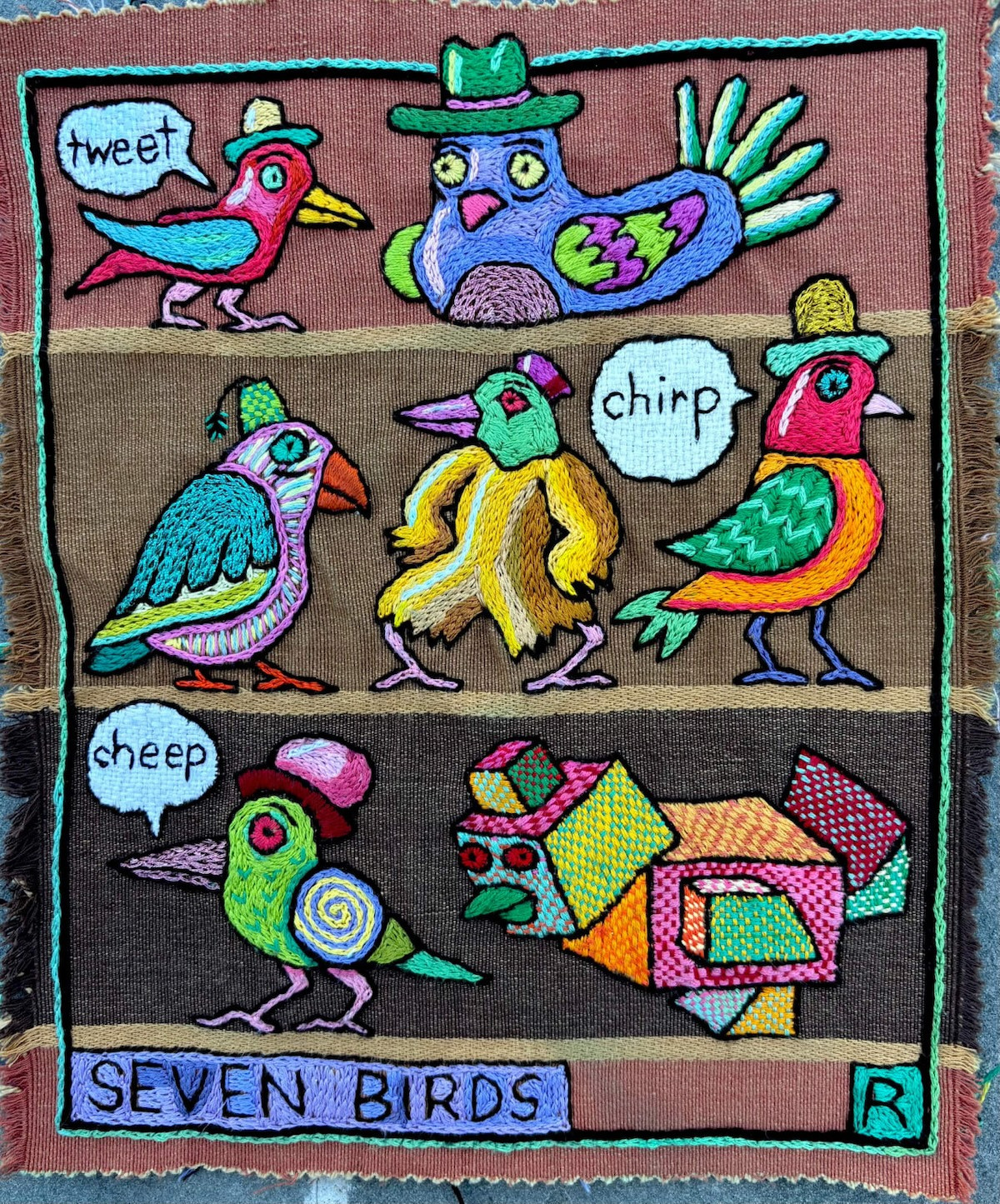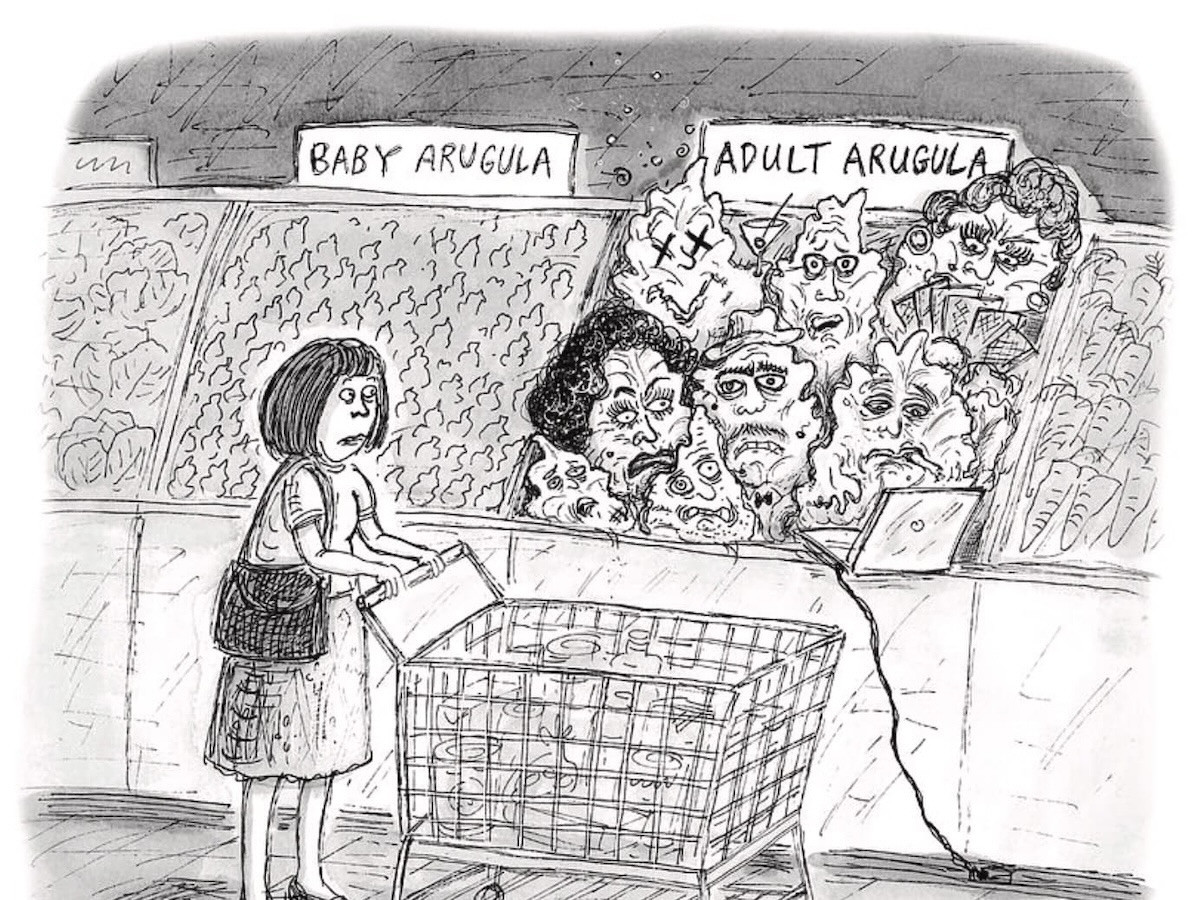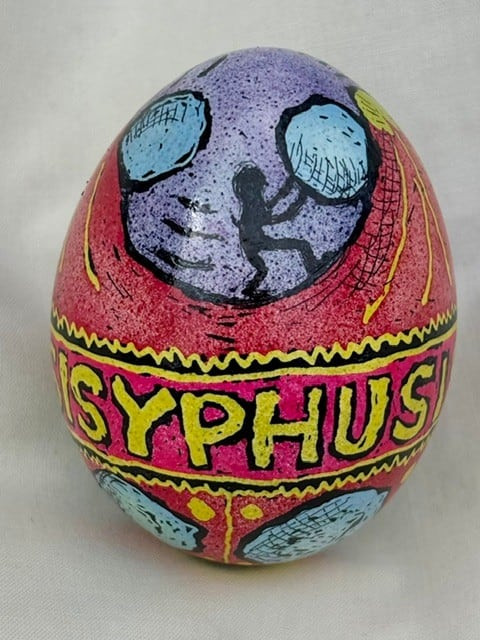Iconic New Yorker Cartoonist Roz Chast Closes Out Carol Cory Fine Art
The gallery's closing brings mixed emotions and lots of laughter.

The gallery's closing brings mixed emotions and lots of laughter.

"Adult Arugula" Roz Chast.
After five years, Carol Corey Fine Art will host its final show in May—an exhibition of new works by legendary New Yorker cartoonist and longtime gallery friend, Roz Chast. Chast, whose off-kilter, wiggly characters and relatably anxious worldview have been part of the American subconscious for decades, was the natural choice to give Carol Corey’s gallery a memorable sendoff.
“Roz has an enormous fan base, and people really come out for her shows,” Corey says. “Everybody just laughs—and it's a really wonderful thing to hear in a gallery.”
Opening May 3 with a reception from 4 to 6pm, and running through June 8, "Roz Chast: New Work," will feature a collection of recent New Yorker cartoons, embroideries, and a fresh batch of Chast’s pysanky eggs—all infused with the charmingly unstable energy that defines her work.

Carol Corey (back), Roz Chast (Front).
“It’s going to be a lot of cartoons—that’s pretty much what I’m probably best known for,” Chast says with a laugh. “But I also get obsessed with different crafts. I just kind of want to do them for a while.” Alongside the original cartoons and covers, the show will spotlight her vibrant hand embroideries—pieces that look, uncannily, like her drawings stitched directly onto fabric, shadows and all. “Carol pointed out that I embroider like someone who draws,” Chast says. “I sketch it first—it’s the architecture—and then feel my way through it.”
Anthropomorphised bird imagery appears frequently in the embroideries, a theme Chast attributes to her lifelong affection for feathered creatures, both indoor and outdoor. “Birds have really rich personalities,” she says. “And sometimes they’re just a little... unhinged. Which, you know, I relate to.”
Chast’s work is defined by its ability to capture a sense of nervous, urban claustrophobia. Though she’s lived part-time in Connecticut for years, she admits she’s never quite adjusted to rural life. “I’m really a city kid,” she says. “I didn’t learn to drive until we moved out here, and I never really got comfortable with it. I feel more at home in an urban environment.” She rarely ventures out to regional events or performances—and jokes that she’s far more likely to be found inside, absorbed in her many projects, than hiking any of the nearby trails.
Alongside the stitched works, Chast is also bringing one of her most delightfully unexpected mediums: pysanky eggs. Using a traditional Ukrainian wax-resist technique, Chast first learned the craft in 2004 and quickly adapted it to her signature style. “You’re drawing on a round surface and you have to think in the negative,” she says. “Which, I’ve joked, comes very easily to me.” She estimates she’ll have between one-and-a-half and two dozen eggs ready for the show, carefully transported, of course, in humble egg cartons. For those still complaining about egg prices, beware. Chast’s eggs sell for $600 a pop, so a dozen will run over $7,000.

"Seven Birds" by Roz Chast
The pairing of artist and gallery is especially poignant. Chast has worked with Corey for decades, since her days running a gallery in New York City, a relationship marked by deep trust and mutual admiration. “I love Carol,” Chast says. “You hear stories about galleries that are incompetent or unscrupulous. Carol was neither. She’s just great to work with.”
Corey opened her Kent gallery in late 2020, after decades working in Manhattan. Though she originally swore she would never open another gallery after leaving New York, the warm Kent Barns community—and the surprising success of Chast's pysanky egg sales, which Cory started selling from home during lockdown—nudged her back into it. “The sale of Roz’s eggs gave me the down payment to open the gallery,” Corey says. “Roz helped make this happen.”
The show will also be a going-away party for Corey. She and her husband are relocating to Scotland to be closer to family. “It’s hard to leave,” she admits. “Kent became a true home to me almost immediately, and the friendships and community we built here are very dear.”
But before she trades New England barns for the Scottish countryside, Corey is closing her gallery with humor, affection, and the touch of beautiful chaos that Chast brings to the world.


